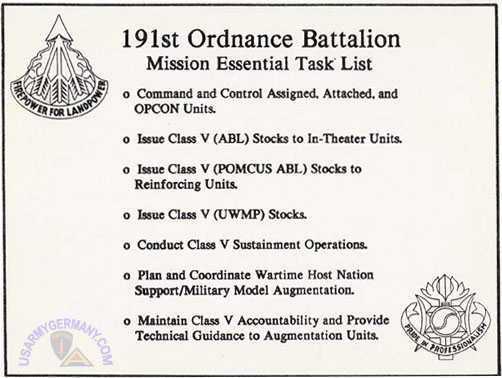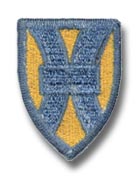If you do
NOT see the Table of Contents frame to the left of this page, then
Click here to open 'USArmyGermany'
frameset |
191st
Ordnance Battalion
60th Ordnance Group
Looking for more information from military/civilian
personnel assigned to or associated with the U.S. Army
in Germany from 1945 to 1989. If you have any
stories or thoughts on the subject, please contact me . .
|
|
|
|
|
| |
| 197th
Ordnance Battalion |
|
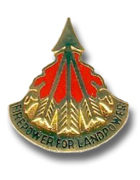 191st Ordnance Bn DUI 191st Ordnance Bn DUI |
|
| (Source: Messenger, Oct 5, 1984) |
After more than 12 dormant years, the 191st Ordnance Battalion was reactivated in a ceremony held Sept 17 at Turley Barracks.
The unit has the primary mission of providing ammunition support to V Corps troops.
CO of the newly formed battalion is Lt Col Malcolm R. McLellan, Jr. CO of the 60th Ord Gp at this time is Col Marvin D. Bailsford. |
|
|
|
| (Source: Email from John Sheppard, HHC 191st Ord Bn, 1988-1990) |
I was a Spec-4-ever in West Germany when the Berlin Wall came down. I was stationed in Mannheim at Taylor Barracks with HHC 191st Ord. Bn., 1988-1990.
I remember taking a bus ride up to the border with East Germany the summer of '88, before the Cold War ended. There was no neutral zone, or even a fence, just red-tipped poles. The East and West Germans walked along the border and, if they had felt so inclined, could have reached out and touched one another, they were so close. Off in the distance, the East had set up a Potemkin Village. You could see it with binoculars from a tower. A sergeant pointed out to me that there was no movement over there other than military vehicles.
It was a different world then.
I'm now a GS-09 working for the Navy at Great Lakes, Illinois. |
|
|
| The purpose of the Mission Essential Task List is to focus a unit's combat mission training on those key essential tasks that are critical to it's mission ... |
|
|
We were in the rear, supporting V Corps units. In wartime, the way we ARTEP-ed it, we would supply combat units and then disappear into the woods around D + 2 or so.
Our units circa 1989:
 HHC - Mannheim, Taylor Barracks. 40 soldiers. HHC - Mannheim, Taylor Barracks. 40 soldiers.
 23rd Ordnance Company - Northpoint (a secure remote site, guarded by MPs and not CSGs, where the soldiers received remote pay) This was our largest company, about 125 soldiers. 23rd Ordnance Company - Northpoint (a secure remote site, guarded by MPs and not CSGs, where the soldiers received remote pay) This was our largest company, about 125 soldiers.
 26th Ordnance Company - Mannheim, 25 to 30 soldiers. 26th Ordnance Company - Mannheim, 25 to 30 soldiers.
 44th Ordnance Company - Baumholder (a new unit for us at the time, we gave up the 33rd Ordnance Company in order to gain this unit) 25 to 30 soldiers. 44th Ordnance Company - Baumholder (a new unit for us at the time, we gave up the 33rd Ordnance Company in order to gain this unit) 25 to 30 soldiers.
 Plus German Civilian Support Group (CSG) units, which actually did the bulk of work for us. After some "liquid bread" for lunch, things could get interesting. Plus German Civilian Support Group (CSG) units, which actually did the bulk of work for us. After some "liquid bread" for lunch, things could get interesting.
I can't remember the numbers for the PSPs and ASPs we operated, though they were all close to where the companies were located.
The PSPs contained about 30 magazines (concrete bunkers covered over in grass) each with a King Tut block (a cube of concrete to block the door) in front. Also, a wire loop, like those used by the electric company on the electrical box, was secured by the lock. On duty nights, we would drive out to one of the PSPs and flash a light on each magazine, making sure the wire loop was there, then drive the fence line, making sure there was no fence cutting.
We had the occasional fence cutting, ostensibly by the Baader-Meinhof Gang or Red Army Faction, who were always getting caught in nearby Mannheim. But I always thought it was German or even American teenagers who thought it would be great fun to watch the Americans go nuts searching for communist intruders. We never found anyone inside the fence line after a fence cutting. |
|
|
|
ORGANIZATION
(1989):
|
|
UNIT
DESIGNATION
|
DUTY
STATION |
COMMENTS |
| HHD,
197th Ord Bn |
Taylor Bks, Mannheim |
|
| 23rd
Ord Co |
Northpoint |
|
| 26th Ord Co |
Mannheim |
|
| 44th
Ord Co |
Baumholder |
|
| 6951st CSC |
Turley Bks, Mannheim |
|
|
|
If you have more
information on the history or organization of the 191st Ord Bn, please
contact me . . |
 |
|
| |
| 33rd Ordnance Company |
|
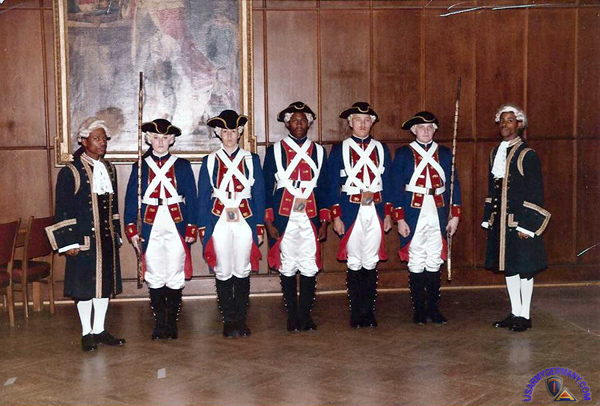
191st Ordnance Battalion Color Guard (Scott Crisp) |
|
| 1985 |
| (Source: Email from Scott Crisp) |
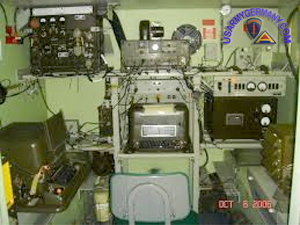 33rd Ord Co RATT rig
33rd Ord Co RATT rig
|
|
I was assigned to the 33rd Ord Company in Bad Kreuznach in 1985-87. I was a member of the 191st Ord BN Color Guard. I have some photos that were taken during that time frame. I had the honor of not only attending the retirement of LTC MCLellan but we were also his color guard. We also presented colors during the 60th Ord Group Christmas Ball in 1986.
When I first arrived in B.K. the 33rd was under the command of Capt. Coe. I was one of three communication MOS soldiers in the unit. I was a 31C. We also had a 31V and a cable puller. The three of us operated the RATT rig (Radio & Teletype). I also assisted the NBC NCO with keeping up with the equipment database. |
|
|
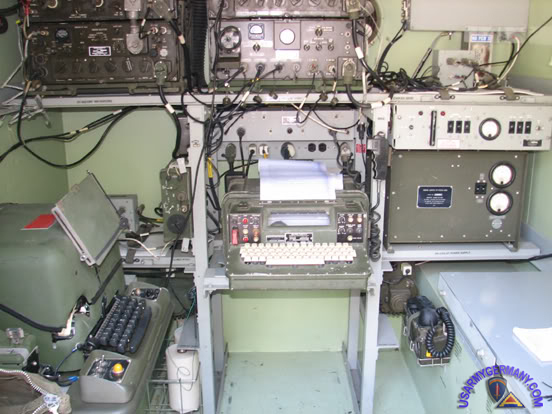
Inside the RATT rig with
UGC-74 installed |
|
The RATT rig was only used during field exercises and training events. The smaller image above shows the inside of the RATT when I first arrived with 2ea TT-99. The second image above was after we upgraded to the UGC-74. Both were secure but the UGC-74 was capable of duplex transmit and could “burst” a signal thereby cutting down the overall transmit time (and reducing the chance of enemy being able to triangulate our position).
The 33rd provided support to the 8th ID in BK so we also worked very closely with 8th Signal.
Our comms were pretty simple really. We had a German telephone system and an internal phone system that was linked “theater wide” with most units. We did not have a standard “switchboard”. Each phone had its own extension. So, for instance, if 60th GP Commo wanted to call 33rd Commo they would just dial the extension direct and my phone would ring.
60th GRP Commo was a bit more complex. It was on the second floor (most of the floor in fact) of HQ (building). There were 2 TACSAT receivers and a “RED PHONE” with direct link to the Commander US Army Europe as well as 21 SUPCOM. There were sleeping quarters as well – Maj. Capps liked to keep the commo folks all together and near “just in case” . We also had a RATT set up 24/7 with 4 – 5K generators linked in a daisy chain.
You asked about the role of the RTO. That stands for Radio Transmitting Operator. My job was to always be near the commander during operations with either a PRC-10 (backpack radio) or a VINSON for more secure communications. When the unit was doing a “hot load” from a PSP or ASP it was my job to assist the commander and the German CSG.
About a year after I arrived Capt. Lopergolo assumed command of the unit. He had a different idea about the commo section and I was reassigned to help the CW4 in the motor pool. Major Capps, who was the 60 OD Group Communications Officer submitted a request for me to transfer to Group HQ as his RTO. I finished out my time in Germany at 60th Ord Gp HQ.
I still have the toasting glass from LTC McLellan’s retirement party. It is on a shelf along with the wine glass from the 60 OD GP Christmas Party. |
|
33rd Ord Co
Bad Kreuznach |
|
|
|
|
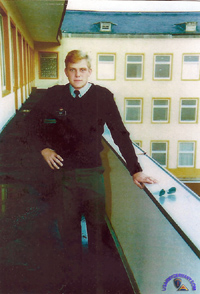
1. Scott Crisp at BK
|
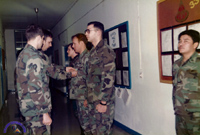
2. Awards ceremony at 33rd Ord
|
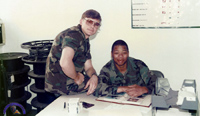
3. Crisp and Pv2 Mitchel Haythe
|
|
|
|
|
| 1988 |
| (Source: Email from Bernard Jene) |
| I came across your website the other day and would like to add some additional info to that provided by SPC Sheppard.
I was assigned to the 33rd Ordnance Company in Bad Kreuznach in January 1988. It was my first assignment following my Officer Basic Course and I was the Executive Officer. The 33rd Ordnance Company was located at the Hospital Kaserne in Bad Kreuznach. It was a designated Type B Augmentation Company, meaning that it had a full allotment of equipment for a 221 man MTOE but only had 13 assigned soldiers, plus 3 NCO’s that were attached from the 23rd Ordnance Company, giving us a total of 16 military personnel. Much of our equipment was in storage and the majority of the vehicles were parked across town on the Minick Kaserne. Made for a long day when we had to shuttle vehicles from parking to our motorpool area on the hospital kaserne for weekly PMCS—60th Ordnance Group required an E5 or above shotgun in each vehicle at the time.
The 33rd Ord Co managed two ammunition sites: one west of town called Fuerfeld, the other almost an hour’s drive north called Spabruecken. While we maintained the stock records account, the German Civilian Support Group moved the actual ammunition. As part of a USAREUR security upgrade program, we had perimeter lights put in at both of the ammunition sites in the mid-1980’s and many Germans thought this was an indication of nuclear weapons being stored at the sites (which was not true).
In June of 1988, the 33rd Ordnance Company was relocated to Miesau Army Depot, leaving the 191st Ord Bn and falling under the Miesau Army Depot Commander, who was an O6 and reported to the 60th Ord Group Commander, also an O6. There were some initial plans to build the 33rd into a 400 man unit that would be responsible for moving ammunition throughout the entire Depot, but that never materialized. Later, in the 1990s, the 191st Ord Battalion HHC was moved to Miesau and the battalion O5 became the Depot Commander, in addition to the battalion commander. At this point, the 33rd Ord Co again became part of the 191st Ord Bn.
When the 33rd Ord Co moved to Miesau, I moved to the 23rd Ordnance Company, located at Kriegsfeld Army Depot (also known as Northpoint). The 23rd was a sub-installation to Worms, but we received various support from Worms, Bad Kreuznach, Mannheim, Kaiserslautern, and Sembach. The 23rd was a 221 man unit, the only full sized DS/GS Ordnance Company in the 60th Ord Group at that time. There was no remote site pay for those stationed at Kriegsfeld: the location failed to meet the two criteria for remote site pay. It did meet the driving time requirement to Worms, but the straight line distance fell short. So…no remote site pay.
The 23rd Ord Co assumed control of the two former 33rd Ord Co ammunition sites, in addition to the three it currently had in June 1988. The largest of the five was Kriegsfeld Army Depot and was just down the road from the kaserne. The other two were very small and essentially only contained prop charges: Gerbach and one other which I cannot recall at this point. |
|
 |
|
| |
|
Related Links:
|
| |
| |
|
 191st Ordnance Bn DUI
191st Ordnance Bn DUI